Session Seven - The Gospel According to Luke
Author
While Luke's name never appears in this gospel, ancient Christian tradition attributes the book to him. One ancient prologue written to introduce the gospel describes Luke as a Syrian from Antioch. The most reliable history indicates that Luke was probably not Jewish, which makes him the only Gentile writer of a New Testament book. Paul listed him with other Gentiles in his greetings to the Colossians (4:14) and mentioned him in his second letter to Timothy (4:11 - this is how we know he was a doctor). The ancient prologue mentioned above goes on to state that Luke eventually settled in the Greek city of Thebes, where he died aged 84.
Date of Composition
Biblical scholars believe that Gospel was composed around 60 AD.
Location, Purpose and Audience
"Many have undertaken to draw up an account of the things that have been fulfilled among us, just as they were handed down to us by those who from the first were eye witnesses and servants of the word. With this in mind, since I myself have carefully investigated everything from the beginning, I too decided to write an orderly account for you, most excellent Theophilus, so that you may know the certainty of the things you have been taught." (1:1-4)
Luke is written for a Greek audience.
Luke's introduction indicates that he composed the letter with the purpose of providing a careful rendering of the events of Christ's life. Probably there were not many records yet, but most first-hand eyewitnesses with credible, verifiable accounts were still alive.
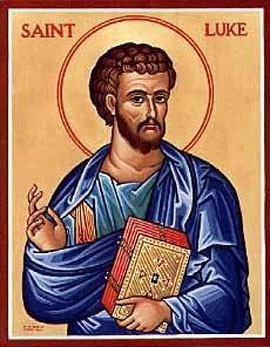
As a physician, Luke would have been trained as a careful observer, a quality that would have been invaluable in this project.
The result was the first (very detailed) part of a two-volume work written to someone named Theophilus (lit. "loved by God" or "lover of God"; thought to be an influential Christian leader in Greece). We know the subsequent volume as Acts. Luke is the only New Testament writer addressing a specific individual.
Acts 21:17 says that Luke accompanied Paul on his final visit to Jerusalem, a visit that occurred in AD 57-58. After years of opposing him, the Jewish leaders had Paul arrested in the temple in Jerusalem, a two-year ordeal which ended with Paul's imprisonment in Caesarea Maritima (the capital of Roman Judea). Luke possibly used this time apart from Paul to begin gathering information for writing the gospel from primary sources - those who had witnessed the ministry, death, and resurrection appearances of Jesus. If Luke took to writing his gospel soon after the information was gathered, then it would have been completed around AD 60.
Themes and Theology
Luke describes Jesus as the Son of Man. None of the other Gospel writers gives such a complete end-to-end view of the life of Christ. Only Luke recounts Jesus forgiving his executioners (23:34) and promising paradise to one of the two men crucified with Him (23:43).
There are more references to the Holy Spirit than Matthew and Mark combined. Consider Luke 11:13:
"... if you sinful people know how to give good gifts to your children, how much more will your heavenly Father give the Holy Spirit to those who ask him."
Luke emphasizes the role of women (mentioned 43 times) more than the others. He celebrates Elizabeth, Mary and Anna, the women who travelled with Jesus and His band, those who mourned his execution and were present at the cross and tomb.
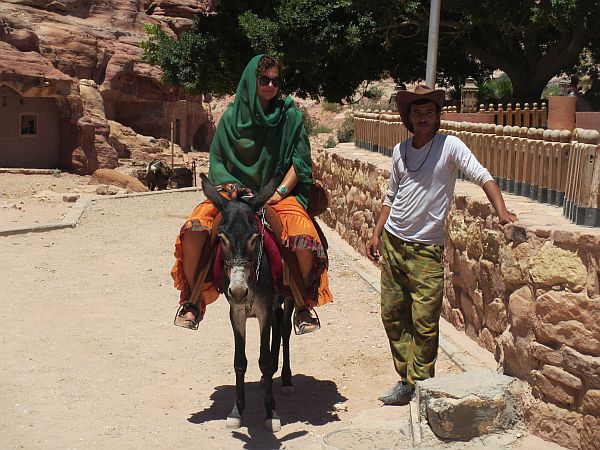
Literary Style and Structure
Luke's Gospel is the longest book in the New Testament. Chapter 1 is by far the longest chapter in the NT.
Luke focuses on Christ's teachings about salvation and Christ's fulfillment of Old Testament prophecies regarding the coming Messiah. It includes the miraculous birth story of Jesus

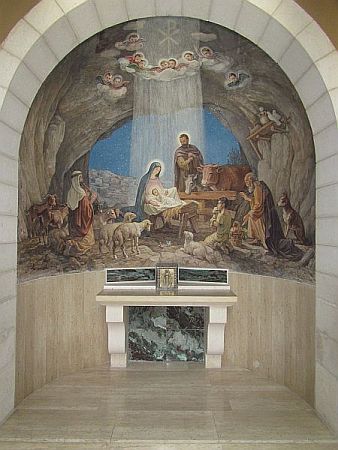
Much of the material unique to Luke involves Jesus's interactions with individuals, many of them on the fringes of society - sinners, women, and children among them. He provides additional information in a number of well-known accounts, eg like Matthew and Mark, Luke recorded the incident of a woman coming to pour perfume on Jesus's feet.; Luke was the only gospel writer to point out the fact known to all present that she was an "immoral woman" (Luke 7:37). In a similar way, we find in Luke alone the conversation between the criminals crucified with Jesus. Luke's portrayal of Jesus reveals in our Lord a man (his genealogy goes back to the man Adam, not Matthew's royal line to David) come to minister and show compassion to all people, no matter their station in life.
Luke is the only Gospel that contains a detailed ancestry of Jesus back to Adam; shepherds and manger scene; narrative of His infancy, His presentation in the temple, the Prophecies of Simeon and Anna, the later visit to the temple where he speaks with the scholars (followed by an 18 year silence). Luke's account is the only Gospel record with a sequel.
Luke is organized into eight primary sections that describe the birth, life, ministry and miracles of Jesus Christ. It is filled with details about history and surrounding events of the times. It is careful to include details about the political culture and the families surrounding Jesus during His earthly life.
- The first section is an introduction that explains the purpose of this Gospel.
- 2. The second (long) section, beginning in the fifth verse of Chapter One, describes the events surrounding the coming of Jesus Christ and his cousin John the Baptist (descriptions unique to Luke), including events in His childhood. The first quote of Jesus in the Gospel of Luke appears in the second chapter, verse 49.
- The third section details the events leading to the public ministry of Jesus, including His baptism (Luke 3:21, 22) and His temptation (Luke 4:1-13).
- The next four chapters comprise the fourth section of Luke's Gospel, including the beginning of Christ's ministry, choosing His 12 Apostles (Luke 6:12-16), and performing miracles (Luke 4:35; 4:39; 5:13). Throughout these chapters, Jesus displayed many powers that validated His authority given to Him by God, including the authority to forgive sins (Luke 5:20; 7:48), to know other people's thoughts (Luke 5:22), to heal people (Luke 6:8), to bring peace to them (Luke 7:50), and authority over nature by calming a storm (Luke 8:24). This section also describes many practical teachings of Jesus about living according to God's way.
- The fifth section begins with Chapter 9, verse 10, where Jesus performs the miracle of feeding 5,000 (Luke 9:10-17). Peter confesses that Jesus is the Christ (Luke 9:20). In 9:28-34, the transfiguration is described in detail.
- The sixth section outlines the ministry of Jesus in Judea, starting in 9:51. Jesus gives His followers instructions on how to help others through discipleship (Luke 10:1-17); teaches us how to pray effectively (Luke 11:2-4); warns us how not to be hypocritical or judgmental (Luke 11:37-52); tells His followers not to worry about common concerns in life, but to trust God (Luke 12:22-34); and gives people a stern warning that they must repent or perish (Luke 13:1-5).
- The seventh section covers 13:22-19:22 and describes many teachings and miracles of Jesus, including a string of parables unique to Luke.
- The eighth and last section covers the trial, crucifixion and resurrection of Jesus Christ. Jesus again shows His authority by knowing everything around Him (Luke 19:30) and giving instructions about how to live (Luke 21:19, 34) and how to rely on God (Luke 22:40, 46). Jesus reiterates His authority as the Son of God (Luke 22:70). Chapter 24 details the resurrection of Jesus and His ascension to heaven.
Very little of the material in 9:51-18:30 appears elsewhere in the other Gospel accounts.
Jesus' Anointed (= Messianic) Mission - to reach sinners and set people free
The Spirit of the Lord is upon me, for he has anointed me to bring Good News to the poor. He has sent me to proclaim that captives will be released, that the blind will see, that the oppressed will be set free, and that the time of the Lord's favor has come." (4:18, 19; quoted from Isaiah 61:1, 2).
- Ironically, this was the moment of Jesus' rejection by his own townsfolk. Even though he had visited (and performed miracles in) Capernaum previously, this seems to be the moment he relocates there.
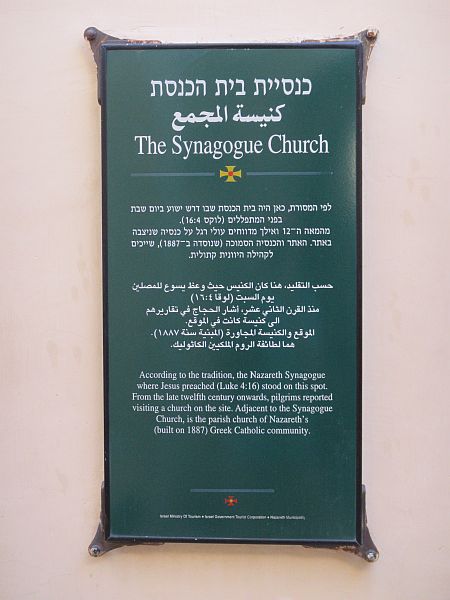
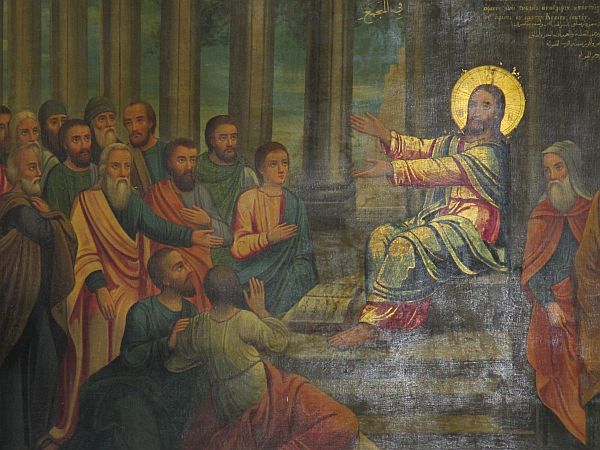
Chapter 6:17-49 contains what some have termed the Sermon on the Plain, a counterpoint with Matthew 5-7 Sermon on the Mount. There is also a version of the Lord's Prayer in 11:1-4, with teaching about persistent prayer in vs. 5-13; see also 18:1-8.
"For the Son of Man[a] came to seek and save those who are lost." (19:10; "Son of Man" was a title Jesus used about Himself. Seeking and saving the lost was why He came; it is the heart of God's search for man since the Garden of Eden and the central motive in the Good News, Jesus becoming a man to save mankind (think of the publican in 18:13; the prodigal in 15:11-24; Zacchaeus in 19:2 and the thief on the cross in 23:43).
"So he continued to travel around, preaching in synagogues throughout Judea." (4:44) Jesus always seems to be preaching and teaching. He goes to out of the way places, many of them Gentiles towns; consider his meeting with Zacchaeus in 19:1-10.
- One of the hardest things for the religious leaders (who relied on their own works and righteousness to please God and expected everyone else to do the same) to accept was the grace of God in extending the Gospel to sinners; and for the first Christians to acknowledge that the Gospel would extend freely to the Gentiles.
Miracles in Luke
"As the sun went down that evening, people throughout the village brought sick family members to Jesus. No matter what their diseases were, the touch of his hand healed every one. Many were possessed by demons; and the demons came out at his command, shouting, 'You are the Son of God!' But because they knew he was the Messiah, he rebuked them and refused to let them speak." (4:40, 41)
"... the blind see, the lame walk, those with leprosy are cured, the deaf hear, the dead are raised to life, and the Good News is being preached to the poor. (7:22)
| | Miracle | Demonstrated
Jesus' Power Over |
|---|
| 1. | Jesus escapes a crowd seeking to kill him (4:28-30) | people |
| 2. | Deliverance of demoniac in synagogue - 4:33-37 | spirit world |
| 3. | Healing Peter's mother-in-law - 4:38, 39 | sickness |
| 4. | Miraculous catch of fish - 5:4-11 | nature |
| 5. | Healing the leper - 5:12-14 | sickness |
| 6. | Healing the man sick with palsy - 5:17-26 | sickness |
| 7. | Healing the man with a withered hand - 6:6-11 | sickness |
| 8. | Walking on the Sea of Galilee - 6:16-21 | nature |
| 9. | Healing the centurion's servant - 7:1-10 | sickness |
| 10. | Resurrection of the Widow of Nain's son - 7:11-18 | death |
| 11. | Stilling the storm - 8:22-25 | nature |
| 12. | Delivering the Gadarene demoniac - 8:26-36 | spirit world |
| 13. | Raising Jairus' daught er - 8:40-56 | death |
| 14. | Healing the woman with the issue of blood - 8:43-48 | sickness |
| 15. | Feeding the 5,000 - 9:11-17 | nature |
| 16. | Healing the demoniac child - 9:37-43 | spirit world |
| 17. | Freeing the demoniac - 11:14, 15 | spirit world |
| 18. | Deliverance of woman crippled for 18 years - 13:11-17 | sickness, time |
| 19. | Man with dropsy healed - 14:1-6 | sickness |
| 20. | Ten lepers cleansed - 17:11-19 | sickness |
| 21. | Healing of blind man near Jericho - 18:35-43 | sickness |
| 22. | Right ear of High Priest's servant healed - 22:50-51 | injury |
| 23. | Resurrection of Jesus - 24:1-8 | death |
Parables of Jesus recorded in Luke
There are many parables unique to Luke's Gospel. They not only teach us about ethics and moral behavior, but more importantly they provide a glimpse of the kingdom of God. They also provide the astute preacher with a treasure trove of ways to provoke more profound reflection upon God's viewpoint made evident through Jesus' teaching.
- Parable of the Sower - 8:4-15
- Parable of the Good Samaritan - 10:25-37
- Parable of the Rich Farmer - 12:13-21
- Parable of the Mustard Seed - 13:18-19)
- Parable of the Great Dinner - 14:15-24
- Parable of the Lost Sheep - 15:1-7
- Parable of the Lost coin - 15:8-10
- Parable of the Prodigal Son - 15:11-32 *
- Parable of the Dishonest Manager - 16:1-9
- Parable of the Widow and Unjust Judge - 18:1-8
- Parable of the Pharisee and the Tax Collector - 18:9-14
- Parable of the Ten Pounds - 19:11-27
- Parable of the Wicked Tenants - 20:9-19
- Read Timothy Keller's excellent material on the Prodigal Son and Prodigal God
Jesus hung out with sinners and preached about God's love for sinners (and joy when they repent) - in sharp contrast with the judgementalism of the religious leaders.
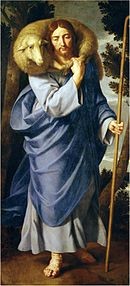
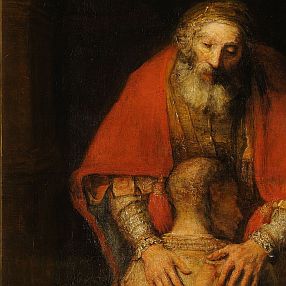
The Good Shepherd, The Prodigal Son
Controversies in Luke
Luke 11:37-55 contains criticism from Jesus about the religious leaders. 19:45-21:4 is a section of endless controversy, from Jesus' cleansing of the temple to his commendation of the widow who gave all. Even this woman, whom her culture sees as a helpless nobody, stands for Jesus in a favorable contrast to the Pharisees and the wealthy. The various debates in this section are attempts to trap Jesus, especially in light of the leadership's reaction to the temple cleansing. Jesus offers two rebuttals, one in a parable showing that their leadership is on the way out and another in a short question designed to focus on Messiah's lordship authority.
Otherwise, there is the usual debate about keeping the Sabbath, another about fasting, and query about Jesus' authority (20:1-8; also 20:41-44), and allegations about where He gets His authority to case out demons (11:124-28). 21:27-40 contains Jesus response to unbelief on the part of the Sadducees about the resurrection. Jesus again criticizes the hypocrisy of the teachers of the Law (20:45-47).
The Passion in Luke - Chapters 22, 23
- the Last Supper
- Jesus predicts Peter's denial
- Jesus prays on the Mt of Olives
- betrayed and arrested
- Peter's denial
- Trial before the Sanhedrin
- trial before Pilate, who declares Him to be innocent (unique to Luke's account)
- before Herod (unique to Luke)
- crucifixion
- death
- burial
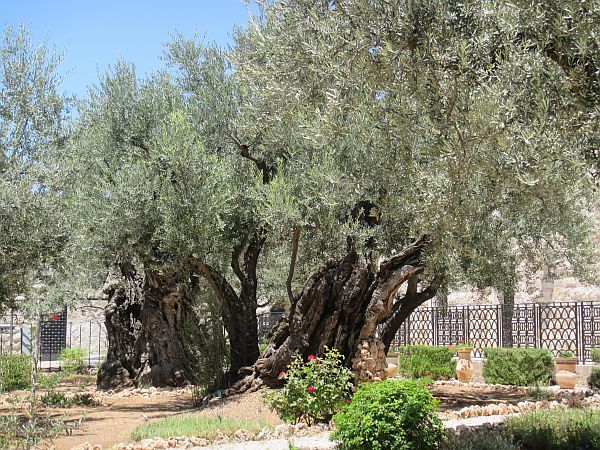
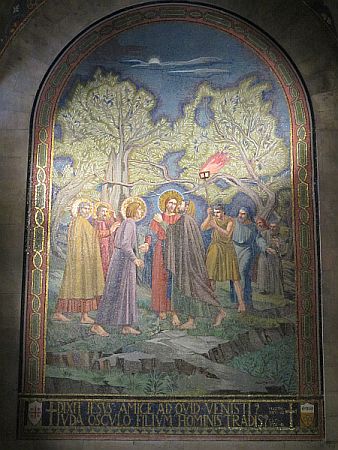
Gethsemane
The New Testament records 11 appearances of Jesus after the resurrection. Jesus' appearance on the road to Emmaus (24:13-35) is an amazing account of his physical, literal, visible presence only found in Luke.
There are several occasions in Luke, after the resurrection, where the disciples confirmed the physical, bodily nature of the risen Christ. This was no phantom appearance. He was a real man with real flesh and bones.
The Great Commission - 24:46-49
"(Jesus told them) It was written long ago that the Messiah would suffer and die and rise from the dead on the third day. It was also written that this message would be proclaimed in the authority of his name to all the nations, beginning in Jerusalem: There is forgiveness of sins for all who repent. You are witnesses of all these things. And now I will send the Holy Spirit, just as my Father promised. But stay here in the city until the Holy Spirit comes and fills you with power from heaven."
The disciples are commanded to stay in Jerusalem until the coming of the Holy Spirit and power. They are to take the Gospel to all nations. Jesus tears down the barriers between Jew and Gentile, slave and free, male and female. His message is universal. Salvation and reconciliation with God comes because He suffered for us; that is the message we share with the world.
For Reflection:
- Luke emphasizes God's mercy and love, reaching out to sinners and restoring them. Can we build a church that functions as a community of restoration for the broken?
- We have been forgiven much - do we love much in response?
- Jesus had a lot to say about prayer in Luke. Do you prayer purposefully and with faith?
- How can we (individually/corporately) recognise the snares of wealth and reach out to the poor and oppressed?
- People living in NT times emphasized their own ethnic communities, prejudices and ideologies; Luke does not. How can we neutrally reach out to the whole world?
- Mary and Martha provide different pictures of busyness versus "time out" in the presence of Jesus. What is our "norm"? How can get more time alone with Jesus?
- Jesus speaks unambiguously in Luke about the cost of discipleship. Are we prepared to make the ultimate surrender of all to follow Him?









